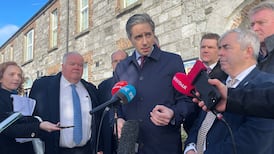The Dublin Airport passenger cap turned 18 on August 29th. You might expect it to be pondering its Leaving Cert results and packing its bags to find a new abode. That looks like happening, with the minister Darragh O’Brien’s promise of legislation, but not until the end of 2026.
Airlines like certainty, however, and it is unclear if this provides enough certainty for them to start including Dublin in their plans to expand or replace lost routes.
In the meantime, Ireland is closed for new international business. It will remain so until the passenger cap is formally removed. As the rest of the world looks on, we seem to have become obsessed with making that removal more complicated than it should be.
Not that you would know it, but Dublin Airport passenger numbers are growing. European airports report that passenger numbers grew by 4.5 per cent in the first six months of this year, and Dublin Airport grew by a little over half that amount, 2.5 per cent. It is already exceeding the 32 million cap by about 10 per cent. The rolling annual figure to August, the most recent available, is 35,471,873.
READ MORE
Where we saw the impact of the cap is at the negotiation table. The annual scramble for the new routes for 2026 at summer conferences such as Routes in Hong Kong in September used to see Dublin at the top of its game. Now it is just a bystander, watching others pick up the business.
Dublin badly needs a third big operator to join Ryanair and Aer Lingus and keep manners on them as regards price and customer service, something akin to what EasyJet or Jet2 do in Belfast. That will not happen until the cap is buried.
Instead, Dublin is losing 17 routes next year as one of the charter operators withdraws completely. Much-needed long-haul routes like São Paulo and Bangkok are not even being discussed because of the cap. Even with the cap in legal limbo and the promise of removal, which will snail its way through the legislative process, there is no certainty that the airport can resume the important business of introducing the services that passengers require.
Lost routes are not the only signs of the damage already done. Valuable Heathrow slots that Aer Lingus acquired because it was one of the first airlines to operate in the airport and that were used for flights to Dublin for the past 75 years have now been allocated to Spain.
It is hard to explain to airlines in Europe, Asia or America how we wrapped ourselves up and knots over a traffic restriction that was solved 15 years ago. Thankfully they still see it as a temporary anomaly, which hopefully is how history will regard it.
It is an inexact exercise tracking where the lost Dublin routes have gone but Manchester seems to be have gained most. Bilbao may have been a beneficiary. Belfast and Edinburgh, both hopeful of getting Dublin’s rejected services, have done less well.
Back to the original decision. It was made in 2007, based on the imperfections of the road approaches to Dublin’s then single terminal, a barely noticed footnote in planning permission conditions. While the Celtic Tiger was roaring, the M50 was choking. It had just two lanes and a barrier toll system. Gridlock and knock-on delays clogged the city and suburbs.
An Bord Pleanála decided that Dublin Airport needed to reapply for planning permission when passenger numbers reached 32 million. At the time, with 21 million passengers, that seemed a long way away.
The road problem was quickly solved. Barrier-free tolling came in on August 30th, 2008. The third lane was completed by 2010. But nobody thought it important enough to have the cap reconsidered. Nor was there any fuss when the cap was eventually breached in 2019, with 32,676,251 passengers (transfer passengers were counted twice, as is the international norm).
Post-pandemic, all had changed. Immigration, globalisation, investment, embraced by the last generation, had become points of combat. Connectivity had become a bogey of the pandemic, and some lobbyists made it their business to keep it that way. Connectivity became a live political issue.
Having imposed the only passenger cap on any European airport, potentially in breach of international competition law, and certainly in breach of our national aviation and tourism policy, we could not bring ourselves to remove it. Ministerial order was the preferred mechanism. Attorney General Rossa Fanning disagreed. The minister chose the slower process of legislation instead.
The debate became mercurial, divorced from the original planning concerns. Some began to see tourism as a threat to our quality of life. Ireland is good at tourism, and its 4 per cent share of the outbound North American market is viewed with envy by our many rivals in a highly competitive business.
Proponents argues that tourism is the biggest employer of young people outside of the cities and rural Ireland would not sustain Michelin-star restaurants without a tourism industry. Opponents said having too many visitors was crowding our roads, our towns and our services.
Some politicians grandstanded on the fact that choking Dublin would benefit Shannon or Cork. It proved not to be the case. Apart from rugby fans’ buses to and from Dublin, not one extra aircraft has landed in a regional airport as a result of the cap, as those with an understanding of the aviation industry pointed out at the start of the exercise.
The opposite would prove the case. Choking Dublin did not boost the west; instead it will choke the west and any part of rural Ireland where tourism delivers jobs.
As the debate became noisy, noise became part of the debate. The ongoing discussions about flight paths and night flights, standard neighbourly concerns for airport operators everywhere, were introduced as a reason to block all extra flights.
Airports are troublesome neighbours all over the world; shutting them down is only an option if there is a viable alternative, which can take decades to develop.
Dublin Airport has a lot of noise complaints, but not very many complainants. Five people lodged 46,197 complaints between them, two-thirds of all the complaints the airport received. One individual lodged 23,000 complaints, 7,535 in a single month.
There were also attempts to introduce an emissions dimension to the debate, as if the aircraft turned away by Dublin will be parked up and not fly at all.
Importantly, the planning rules had changed, too. The road to the airport is a piece of national infrastructure, free from the quagmire of local planning laws and the glacial speed of process therein.
Not so Dublin Airport. It was placed under the aegis of Fingal County Council in 2019 by Minister Shane Ross, to get around another bureaucratic obstacle. The airport, which handles 70 per cent of the traffic on and off the island, has the same status as a troublesome takeaway when it comes to the planning process.
This is unusual, nationally and internationally. Charles de Gaulle does not apply to Roissy council for permission to paint its walls. Heathrow is not beating a path to Hounslow council to cut the grass. Other airports and vital parts of the Irish economy, like Dublin Port, are counted as national infrastructure. It remains to be seen if the legislation will change this.
The DAA estimates planning delays have cost a cumulative €500 million. This will have to be recouped in higher fares from air passengers.
We have been here before. In 1948 Éamon de Valera planned a direct transatlantic air service, operated by a subsidiary of Aer Lingus. Aircraft were bought. Slots were secured. Then the government changed, John A Costello cancelled the route and sold the aircraft. Zealotry fuelled the argument: with connectivity, Costello was told by archbishop of Dublin John Charles McQuaid, would come paganism and irreligion.
The debate about the cap has been fuelled by zealotry of a more modern kind. The cap, now 18, looks like it might turn 20 before we can get rid of it. The final decision on whether it has any legal standing is in a holding pattern of judicial process and promised legislation.
As a country, we have a poor history when it comes to delivering infrastructure. As the tussle continues, an expensive piece of infrastructure, designed to bring Dublin Airport passenger numbers to 60 million, lies underused. Ireland’s potential economic advantage is being squandered. That may turn out to be the cap’s biggest cost.














